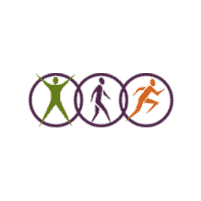Stenosis Q & A
What is spinal stenosis?
Stenosis is a narrowing of the spinal canal, which is the open space that your spinal cord and nerves run through. This narrowing can compress the nerves that travel through your spine to other areas of your body, like the arms and legs.
Spinal stenosis usually develops slowly and most often affects older adults. Wear-and-tear changes that happen over time can cause the spinal canal to become narrow. By age 50, up to 95% of people have some degree of degenerative damage to their spine. Arthritis is a common cause of spinal stenosis.
What are the symptoms of spinal stenosis?
Symptoms vary based on where in your spine the stenosis occurs. Cervical spinal stenosis can cause neck pain, shoulder pain, and numbness and weakness in your arms and hands. Lumbar spinal stenosis can cause low back pain, hip pain, and numbness and weakness in the legs and feet.
Spinal stenosis pain may feel like a cramping, burning, or tingling pain. When the pain radiates from your low back into your buttocks or legs, it’s called sciatica or radiculopathy.
Lumbar spinal stenosis can weaken your leg and foot muscles to the point of affecting how you walk. You may experience foot drop, the feeling like your foot slaps on the ground as you walk.
How is spinal stenosis diagnosed?
First, the team at Performance Pain and Sports Medicine conducts a thorough medical evaluation. They may take a variety of tests, such as:
- X-ray
- Computerized tomography (CT) scan
- Magnetic resonance imaging (MRI) scan
- Myelogram, which involves injecting a contrast dye before a CT scan or X-ray
- Electromyography (EMG/NCS)
These tests help your provider determine the exact location of the stenosis and the nerves affected so they can create an individualized treatment plan.
How is spinal stenosis treated?
The team at Performance Pain and Sports Medicine always explores every available conservative treatment first. Nonsurgical treatments for spinal stenosis include:
- Anti-inflammatory and pain-relieving medications
- Physical therapy
- Weight management
- Stretching and strengthening exercises
- Alternative therapies like acupuncture and chiropractic
- Epidural steroid injections
- Regenerative medicine like stem cell therapy and platelet-rich plasma (PRP)
If your spine pain persists despite treatment, the team may recommend surgery. Minimally invasive procedures that also treat spinal stenosis:
- Endoscopic spine surgery
- Intraspinous spacers
- Intrathecal pain pump
- Minimally Invasive Lumbar Decompression
- Radiofrequency ablation
- Spinal cord stimulation
For advanced care of spinal stenosis, call the nearest Performance Pain and Sports Medicine office today.

